When you look back at the rich history of the Green Bay Packers, we focus squarely on the Lombardi era teams that won 5 NFL championships in the 1960’s. While the most iconic of these championships was The Ice Bowl for the 1967 title, a more gripping affair in the classic sense took place for the 1966 crown. While every championship has its importance this was the 2nd in a row which set the Packers up for the chance at winning 3 straight.

Bart Starr standing amidst a charging George Andrie (66) Bob Lilly (74) and the late Willie Townes (71) attempting a pass.
With the merger between the NFL and the AFL signed, each league would send their champion to play in a world championship game called the Super Bowl. While the sporting press sided with the traditionalist NFL there were revolutionaries who sided with the new guard if you will. The American Football League was established in 1959 and began play in 1960.
The new league had a flashier style of play and took to the air in a way that aside from the Baltimore Colts and Johnny Unitas, the rest of the NFL and traditionalists scoffed at. It was 3 yards and a cloud of dust over here. Evidenced by the perennial champion Packers’ signature play… the power sweep. If I were to tell you to close your eyes and picture the Lombardi Packers, the image of Jerry Kramer and Fuzzy Thurston leading either Jim Taylor of Paul Hornung would come to mind vividly.
The founder of the AFL was Lamar Hunt of Hunt Bros. Oil and a Dallas, Texas resident. He had been thwarted in an attempt to buy the St Louis Cardinals a decade previous and wasn’t taken seriously when asked about NFL expansion to Dallas. So once he started the American Football League with his Dallas Texans as a flagship team (now the Kansas City Chiefs), the NFL scrambled and put a team down in Dallas which was then named the Cowboys. Each began play in the 1960 season.
 Over the next few years the AFL and NFL waged war for the top college athletes. The Cowboys took several seasons to learn how to win under the guidance of Head Coach Tom Landry. Yet in spirit because they had been borne out of expansion and were the new kids on the block, the Cowboys were AFL kindred spirits residing in the NFL. They had a new way of scouting and evaluating talent much like the AFL and although Coach Landry had been the defensive coach (the term coordinator didnt’ exist until 1967) for the New York Giants in the 1950’s, he pioneered several offensive formations and sets to undo the 4-3 he brought into prominence a decade earlier.
Over the next few years the AFL and NFL waged war for the top college athletes. The Cowboys took several seasons to learn how to win under the guidance of Head Coach Tom Landry. Yet in spirit because they had been borne out of expansion and were the new kids on the block, the Cowboys were AFL kindred spirits residing in the NFL. They had a new way of scouting and evaluating talent much like the AFL and although Coach Landry had been the defensive coach (the term coordinator didnt’ exist until 1967) for the New York Giants in the 1950’s, he pioneered several offensive formations and sets to undo the 4-3 he brought into prominence a decade earlier.
It took a few years to gain footing however Landry finally had a team that could challenge for the NFL Championship by the ’66 season. He would take on his old nemesis Vince Lombardi in The Cotton Bowl to decide who would go on to play the Kansas City Chiefs in Super Bowl I.
Why was Lombardi a nemesis?? Lombardi was the Offensive Coach (Coordinator) of the New York Giants in the 1950’s before moving on to Green Bay. His offense used to sharpen Landry’s defense and vice versa for a great Giants team.
Another side note to this iconic championship it was Dallas’ Tex Schramm who stepped across league lines with Lamar Hunt to discuss the merger in the 1st place. It happened at Love Field and they met at the Texas Ranger Statue. So not only were the establishment Packers going to Dallas for the championship, they wanted to give the traitorous Cowboys their comeuppance. When you think of the city of Dallas from a national perspective, keep in mind we are only 3 years removed from JFK’s assassination there….and Lombardi was a Kennedy Democrat
Into this cauldron Lombardi and his team stepped…
With Tom Brown’s desperation last second interception to conclude the ’66 NFL Championship, the Packers survived and were off to Los Angeles for Super Bowl I. Tom Landry would go on to the Pro Football Hall of Fame as one of the greatest coaches in history. His team wasn’t ready to carry the mantle of league champion yet but they would come back to win Super Bowl VI as the 1st of Landry’s 2 championships.
It was Vince Lombardi’s team who defended their ’65 NFL championship’65 NFL championship and would go on to win Super Bowl I. There they would defeat Kansas City to win their 4th overall league title. Now looking back they had to actually beat two upstarts to win it all originating from the city of Dallas to crown themselves as Team of the 60’s. This would be the last with the Hall of Fame backfield duo of Jim Taylor and Paul Hornung. It was quiet Bart Starr who elevated his play with a record 4 TD passes in he win down in Dallas. Out in L.A. he was even better carving up the Chiefs to win the 1st MVP of the very 1st Super Bowl.

Super Bowl I Trophy sits in the Green Bay Packer Hall of Fame.
Another championship loomed in 1967 but it was the prime time finish of the ’66 championship at night that pushed the Packers into NFL lore.
As for the trophy won out in Los Angeles, The Chancellor visited it in the Green Bay Packers Hall of Fame just two weeks ago.
Today this rivalry renews as the Packers are down in Dallas to take on the Cowboys in Jerry World. Hopefully this look back helps in explaining the rivalry began here which will enrich The Ice Bowl memories created a year later.
Thanks for reading and please share the article.
Keep in mind we’re still campaigning to assist Jerry Kramer to get into the Pro Football Hall of Fame and you can help. Lend your thoughts as well by writing in to the Pro Football Hall of Fame to the address below. Please be respectful and positively lend your voice:
Please write & nominate #64
Send letters to:
Pro Football Hall of Fame
Attention Senior Selection Committee
2121 George Halas Dr NW, Canton,
OH 44708




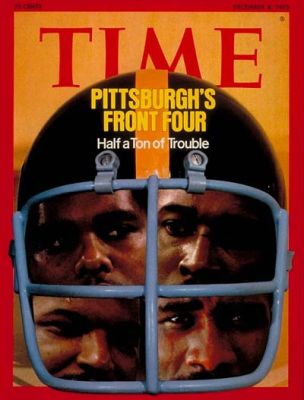

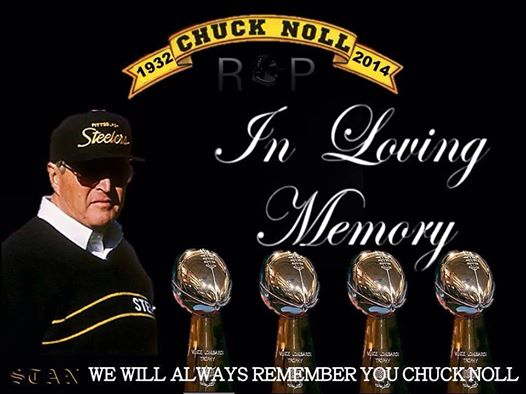


 Postscript: 3, December 2019: Last August, the Pro Football Hall of Fame inducted Kansas City Chiefs great FS Johnny Robinson (finally) for his contributions to pro football back in the American Football League. An honor long overdue and ironically every time Chris would interact and talk about great players of the past, not one conversation would go by without mention that Robinson belonged in Canton. Not one.
Postscript: 3, December 2019: Last August, the Pro Football Hall of Fame inducted Kansas City Chiefs great FS Johnny Robinson (finally) for his contributions to pro football back in the American Football League. An honor long overdue and ironically every time Chris would interact and talk about great players of the past, not one conversation would go by without mention that Robinson belonged in Canton. Not one.
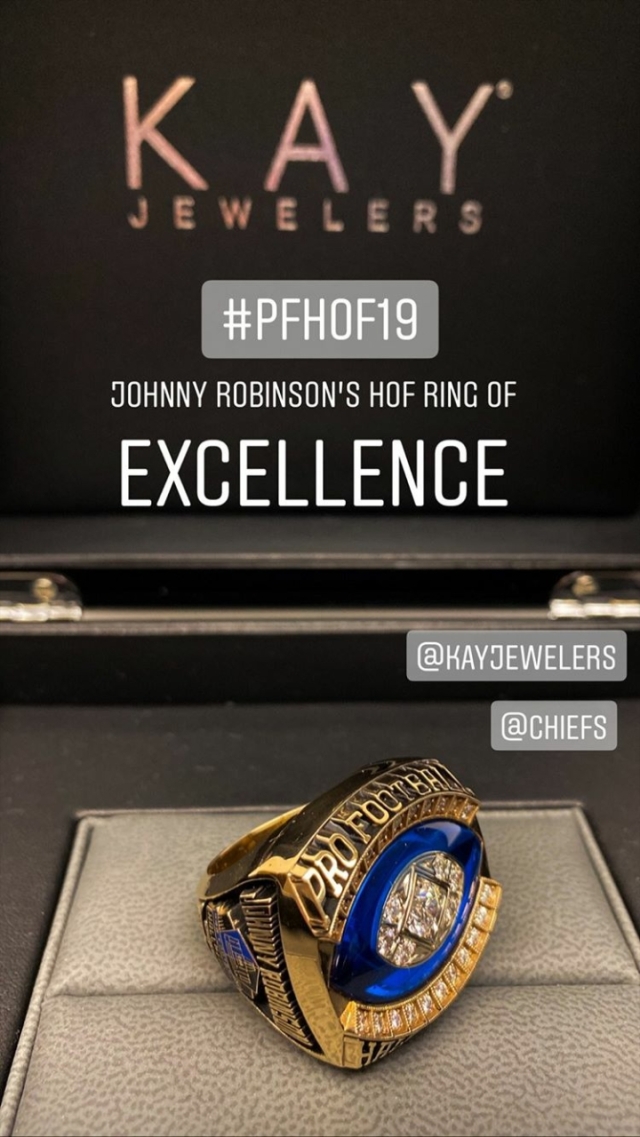 Congratulations Johnny Robinson on your Hall of Fame Induction!! Taylor Blitz Times salutes you.
Congratulations Johnny Robinson on your Hall of Fame Induction!! Taylor Blitz Times salutes you.




 Unlike other leagues that popped up and died, the American Football League lives on in the American Football Conference of the modern NFL. With a burgeoning economy after World War II, Americans turned their attention to a life of leisure during the 1950s. Sports became the outlet for most of America.
Unlike other leagues that popped up and died, the American Football League lives on in the American Football Conference of the modern NFL. With a burgeoning economy after World War II, Americans turned their attention to a life of leisure during the 1950s. Sports became the outlet for most of America.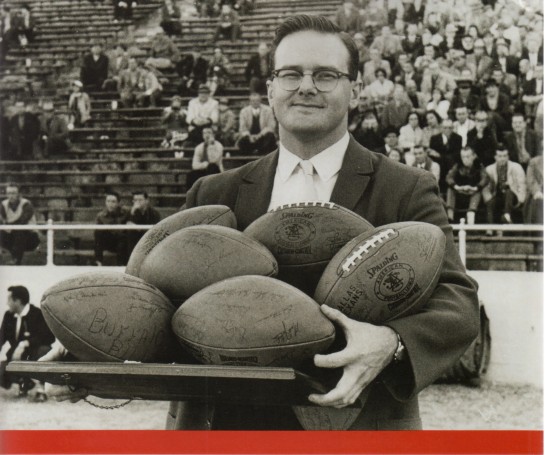

 This is where he received his dubious ownership distinction and awkward title President of the Managing General Partner for the Raiders. He had only been a coach before, yet one of the items that seemed spineless is the NFL made the AFL’s teams pay $3 million in reparation damages each and had Al Davis been there would never have acquiesced to such a demand. Not when they had the NFL crawling to the table. It was this animosity toward Pete Rozelle, Bud Adams and especially the Kansas City Chiefs and Lamar Hunt that raged on for many years. *This is where the animosity between Davis and Rozelle fostered…remember the court battles of the 1980s between the Oakland Raiders v the NFL??*
This is where he received his dubious ownership distinction and awkward title President of the Managing General Partner for the Raiders. He had only been a coach before, yet one of the items that seemed spineless is the NFL made the AFL’s teams pay $3 million in reparation damages each and had Al Davis been there would never have acquiesced to such a demand. Not when they had the NFL crawling to the table. It was this animosity toward Pete Rozelle, Bud Adams and especially the Kansas City Chiefs and Lamar Hunt that raged on for many years. *This is where the animosity between Davis and Rozelle fostered…remember the court battles of the 1980s between the Oakland Raiders v the NFL??*
 In the first two Super Bowls
In the first two Super Bowls 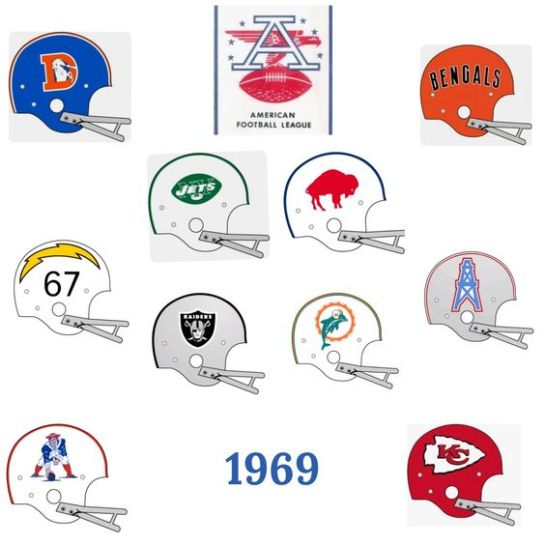 In conclusion: It was wrong to not include Davis and to me is the one of the few black eyes in this success story. The AFL was swallowed into the monolith that is the NFL after expanding the AFL to 10 teams with Cincinnati, and Miami emerging. These 10 teams were joined by the Pittsburgh Steelers, Cleveland Browns, and Baltimore Colts, yes the Baltimore Colts who gave the NFL a black eye with that first loss. They didn’t go empty handed, each club was paid $3 million to move to the new AFC. Yet AFL loyalists such as Davis wished the two leagues stay separate, and he truly believed they would have eventually folded the NFL.
In conclusion: It was wrong to not include Davis and to me is the one of the few black eyes in this success story. The AFL was swallowed into the monolith that is the NFL after expanding the AFL to 10 teams with Cincinnati, and Miami emerging. These 10 teams were joined by the Pittsburgh Steelers, Cleveland Browns, and Baltimore Colts, yes the Baltimore Colts who gave the NFL a black eye with that first loss. They didn’t go empty handed, each club was paid $3 million to move to the new AFC. Yet AFL loyalists such as Davis wished the two leagues stay separate, and he truly believed they would have eventually folded the NFL.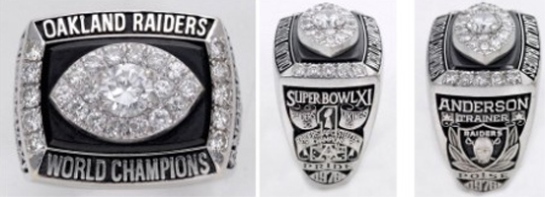
 There you have it…how the AFL changed the sporting landscape after the first shot was fired by the folding of their predecessors, the AAFC. San Francisco’s entering the NFL doesn’t get the impact that it should because so much focus was on champion Cleveland coming over. The western expansion of American Football owes a debt of gratitude to the 49ers yet even more to those original owners.
There you have it…how the AFL changed the sporting landscape after the first shot was fired by the folding of their predecessors, the AAFC. San Francisco’s entering the NFL doesn’t get the impact that it should because so much focus was on champion Cleveland coming over. The western expansion of American Football owes a debt of gratitude to the 49ers yet even more to those original owners.
You must be logged in to post a comment.